Well Water Problems - Effective, Proven, Reliable Solutions from RainDance Water Systems
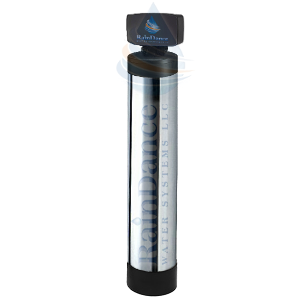
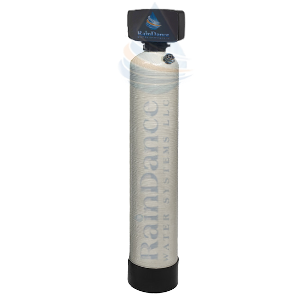 2) Blue/Green –
Normally associated with an elevated level of copper in the
water supply. It may be a naturally occurring contaminant or the
water may be acidic and picking up the copper from your home’s
plumbing.
2) Blue/Green –
Normally associated with an elevated level of copper in the
water supply. It may be a naturally occurring contaminant or the
water may be acidic and picking up the copper from your home’s
plumbing.
-
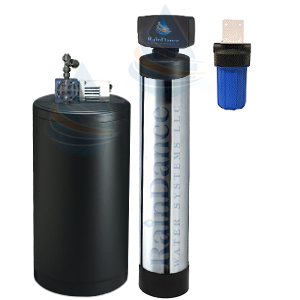 Oxidized Red Water Iron contains
red particles easily visible as the water is drawn from the faucet.
Oxidized Red Water Iron contains
red particles easily visible as the water is drawn from the faucet. - Clear Water Iron is very common, and will develop red particles in the water after water is drawn from the faucet, and is exposed to the air for a period of time. The iron particles actually "rust" once they are exposed to air.
- Colloidal Iron consists of extremely small particles of oxidized iron particles suspended in water. This type iron looks more like cloudy, colored water, instead of being able to actually see small red particles of iron. This type iron will not filter well because of the extremely small particle size. (Chlorination may be required).
- Iron Bacteria consists of living organisms found in the water and piping of the well and house. You can tell if you have Bacterial Iron by looking in your toilet flush tank, and finding a reddish/green slime buildup. To confirm this, you should take a sample of this slime to your local health department for testing. This kind of iron is the hardest to get rid of. To completely eliminate this form of bacterial iron requires chlorination of the entire water system, starting with the well casing, well pump, pressure tank and the home plumbing system. (Chlorination may be required).
- 3) Black –
Normally associated with Manganese being present in the
water supply. Concentrations as low as 0.05 part per
million of manganese will produce dark brown or black
staining. Fabrics washed in manganese-bearing waters are
almost invariably stained. Deposits collect in plumbing,
and tap water frequently contains a black sediment and
turbidity. Manganese bacteria often causes clogging of
pipes. Manganese: EPA secondary drinking water standard
is 0.05mg/l
4) Yellow to light brown – Normally associated with Tannins being present in the water supply. Tannins (humic acid) are found in waters which have passed through large quantities of decaying vegetation. Tannins can cause yellow water and yellow staining on fabrics and fixtures. Tannins measuring 0.5 PPM or higher may cause staining and/or interference with various water treatment processes. - 5) Cloudy – Normally associated with Turbidity in the water supply. Visual haziness in water. Turbidity (fine particles) and sediment (coarse particles) may be caused by sand, scale, or rust In addition to an objectionable, cloudy appearance, these substances may cause plugged piping or fouled water treatment equipment. Turbidity does not settle out readily, but remains suspended for several hours. It is normally present in pond, lake, or river water supplies. EPA standard level 5 NTU.
-
Problem: Hard Water Spots, Scale,
Etching
1) White Chalky Scale – Normally associated with Hardness or elevated levels of Total Dissolved Solids (salts) being present in the water supply.
2) Bathtub rings – Normally associated with Hardness being present in the water supply.
3) Soap Scum – Normally associated with Hardness being present in the water supply. - 4) Spots
on Glassware, plates, flatware, showers, appliances –
Normally associated with Hardness or elevated Total
Dissolved Solids being present in the water supply.
5) Dingy Laundry – Normally associated with Hardness, Tannins, Manganese and/or Iron being present in the water supply. -
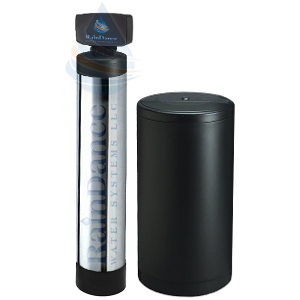 Hard water can dry out skin and makes hair
brittle. It causes soap scum in tubs and showers and spots on
faucets, fixtures and dishes. It also causes scaling in appliances
such as washing machines, dishwashers and water heaters, which can
result in high operation costs and premature replacement.
Hard water can dry out skin and makes hair
brittle. It causes soap scum in tubs and showers and spots on
faucets, fixtures and dishes. It also causes scaling in appliances
such as washing machines, dishwashers and water heaters, which can
result in high operation costs and premature replacement. - Hardness is measured in parts per million (or the equivalent mg/L) or in grains per gallon (gpg). Note: if the water analysis is given in ppm as CaCO3 then 1 gpg = 17.1 ppm. There is no established limit for the acceptable level of hardness in water, but it is generally considered to become problematic at around 3 gpg.
- Levels of hardness are referred to as follows:
- Soft Water: 0 - 1 grains per
gallon (gpg)
Slightly Hard Water: 1 - 4 grains per gallon (gpg)
Moderately Hard Water: 4 - 7 grains per gallon (gpg)
Hard Water: 7 - 10 grains per gallon (gpg)
Very Hard Water: Over 10 grains per gallon (gpg) - Problem:
Bad Tastes, Smelly Water Odors
1) Rotten Eggs – Hydrogen Sulfide is a gas which smells strongly like rotten eggs. It results from the decay of organic matter with organic sulfur and the presence of certain types of bacteria. Even very low concentrations are offensive as well as highly corrosive (silver tarnishes almost immediately upon contact with H2S). hydrogen sulfide can add to the corrosion of metal plumbing materials. It will attack iron, steel, copper, and galvanized plumbing, producing a black color in the water. In combination with dissolved iron, hydrogen sulfide can produce black stains in plumbing fixtures and laundry. A black deposit may also collect in piping and on fixtures. An official limit has not been established for hydrogen sulfide in drinking water, a recommended limit of 0.05ppm (mg/1) has been proposed. - 2) Bitter
Taste – Normally associated with
Sulfate, Iron, or Manganese being present in the water
supply.
3) Metallic Taste – Normally associated with Iron, Manganese, Copper or Low Acidic pH being present in the water supply. - 4) Salty
Taste – Normally associated with
Chlorides, Sodium or elevated Total Dissolved Solids being
present in the water supply.
-
 Nitrate: (what
are nitrates?)
Nitrate: (what
are nitrates?) - Nitrate (NO3) comes into water supplies through the nitrogen cycle rather than via dissolved minerals. It is one of the major ions in natural waters. Most nitrate that occurs in drinking water is the result of contamination of ground water supplies by septic systems, feed lots, and agricultural fertilizers. Nitrate is reduced to nitrite in the body. The EPA safe drinking water limits of below 10ppm for Nitrate/Nitrite and below 1ppm for Nitrite
- Well Water Nitrate Filter Treatment Solution: Nitrate Eater Series
- Nitrate Removal Reverse Osmosis Treatment Solutions: Reverse Osmosis Drinking Water Filters
- Nitrite:
- Nitrites are not usually found in drinking water supplies at concentrations above 1 or 2 mg/l (ppm). Nitrates are reduced to nitrites in the saliva of the mouth and upper GI tract. This occurs to a much greater degree in infants than in adults, because of the higher alkaline conditions in their GI tract. The nitrite then oxidizes hemoglobin in the blood stream to methemoglobin, thus limiting the ability of the blood to carry oxygen throughout the body. Anoxia (an insufficiency of oxygen) and death can occur. The US EPA has established the MCL (maximum contaminant level) for nitrite at 1 mg/l.
-

- Sulfate: (what are sulfates?)
- Sulfate (SO4) occurs in almost all natural water. Most sulfate compounds originate from the oxidation of sulfite ores, the presence of shales, and the existence of industrial wastes. Sulfate is one of the major dissolved constituents in rain. High concentrations of sulfate in drinking water causes a laxative effect when combined with calcium and magnesium, the two most common components of hardness. Bacteria which attack and reduce sulfates, causes hydrogen sulfide gas (H2S) to form. Sulfate has a suggested level of 250 mg/l in the Secondary Drinking Water Standards published by the US EPA.
-

- Tannins: (what are tannins?)
- Tannins are formed upon the decomposition of vegetation. These compounds are large molecular weight organics that fall under two primary categories: Humic acids and Fulvic acids. These are simplified structures, but they show the complexity of Tannins. Tannins can cause a yellow to brown cast in water and may also impart a taste and odor. They will generally be found in surface water and shallow wells. Although these compounds are not a healthy risk, they are aesthetically displeasing.
-
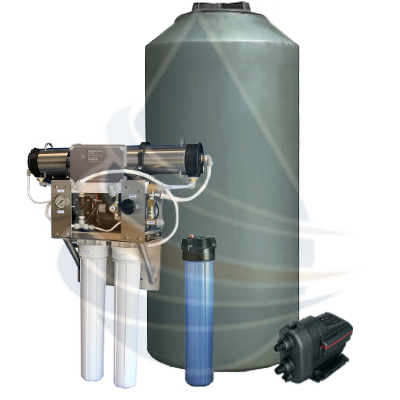 Total
Dissolved Solids: (what
are total dissolved solids?)
Total
Dissolved Solids: (what
are total dissolved solids?) - Total Dissolved Solids (TDS) - on conductivity test for dissolved materials in drinking water. TDS comprise inorganic salts (principally calcium, magnesium, potassium, sodium, bicarbonates, chlorides and sulfates) and some small amounts of organic matter that are dissolve in water. TDS in drinking water originates from natural sources, sewage, urban run-off, industrial wastewater, and chemicals used in the water treatment process and the nature of the piping or hardware used to convey the water, i.e., the plumbing. In the United States, elevated TDS has been due to natural environmental features such as: mineral springs, carbonate deposits, salt deposits, and sea water intrusion, but other sources can include: salts used for road de-icing, anti-skid materials, drinking water treatment chemicals, storm water and agricultural runoff, an point/non-point wastewater discharges. High levels of total dissolved solids can adversely industrial applications requiring the use of water such as cooling tower operations, boiler feed water, food and beverage industries, and electronics manufacturers. High levels of chloride and sulfate will accelerate corrosion of metals. The US EPA has a suggested level of 500 mg/l listed in the Secondary Drinking Water Standards.
-
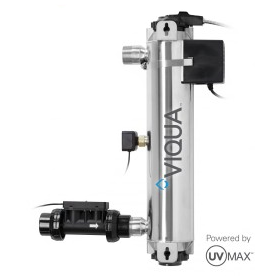 Bacteria
- E-Coli / Coliform: (what
is bacteria?)
Bacteria
- E-Coli / Coliform: (what
is bacteria?) - Source - Bacteria are tiny organisms
occurring naturally in water. Not all types of bacteria are
harmful. Many organisms found in water are of no health concern
since they do not cause disease. Biological contamination may be
separated into two groups: (1) pathogenic (disease causing) and
(2) non-pathogenic (not disease causing). Pathogenic bacteria cause illnesses such as typhoid fever, dysentery, gastroenteritis, infectious hepatitis, and cholera. All water supplies should be tested for biological content prior to use and consumption. E.Coli (Escherichia Coli) is the coliform bacterial organism which is looked for when testing the water. This organism is found in the intestines and fecal matter of humans and animals. If E.Coli is found in a water supply along with high nitrate and chloride levels, it usually indicates that waste has contaminated the supply from a septic system or sewage dumping, and has entered by way of runoff, a fractured well casing, or broken lines. If coliform bacteria is present, it is an indication that disease causing bacteria may also be present. Four or fewer colonies / 100 ml of coliforms, in the absence of high nitrates and chlorides, implies that surface water is entering the water system. If pathogenic bacteria is suspected, a sample of water should be submitted to the Board of Health or US EPA for bacteriological testing and recommendations.

